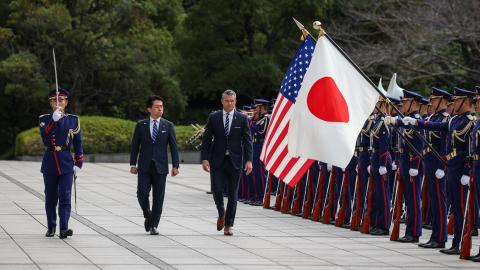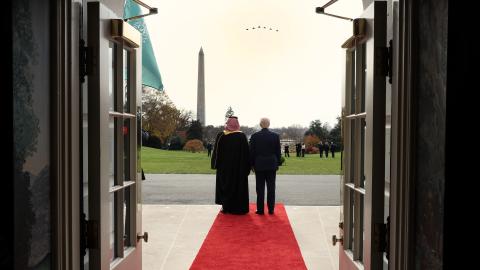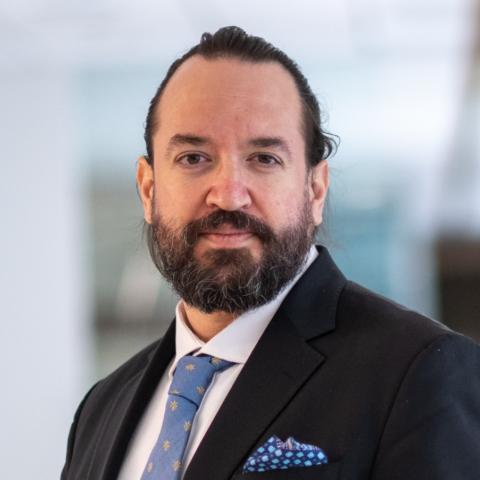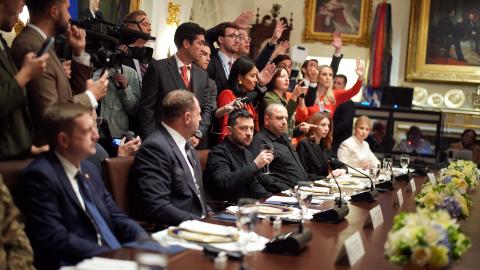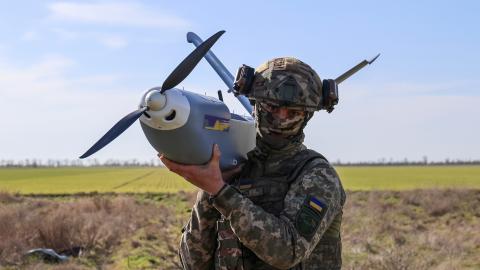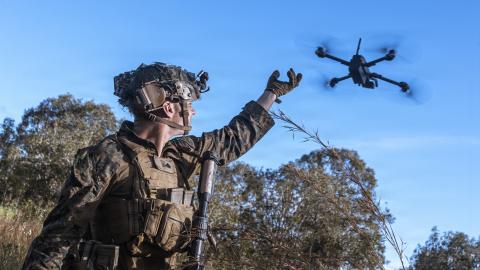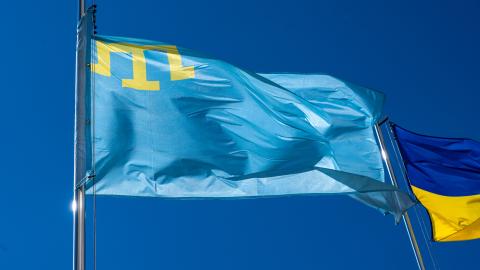President Donald Trump seemed confident he could quickly end Russia’s invasion of Ukraine. But more than 150 days into his second term, peace seems no closer than it did on day one. Although headlines focus on high-stakes diplomacy and Moscow’s nightly aerial bombardment of Ukrainian civilians, policymakers in the United States should not overlook the Kremlin’s mistreatment of ethnic minorities under its control—particularly the continued persecution of the Crimean Tatar community.
The Crimean Tatars are the indigenous people of the Crimean Peninsula. They are ethnically Turkic and religiously Sunni Muslim, with a rich but often tragic history. From 1441 to 1783, they lived under the Crimean Khanate, the longest-lasting successor state to Genghis Khan’s Golden Horde. For more than three centuries, the Crimean Tatars maintained their own political and cultural institutions while serving as a vassal of the Ottoman Empire. This era defined much of their national identity—until Catherine the Great annexed the khanate in 1783, marking the beginning of Russian imperial domination. Amid the chaos of the Russian Revolution and subsequent civil war, Crimea was absorbed into the Soviet Union.
Soviet rule was even more brutal for the Crimean Tatars. In the 1920s, Vladimir Lenin reportedly stated, “We will take them, divide them, subjugate them, and digest them.” Under Joseph Stalin, conditions worsened. Because a small percentage of Crimean Tatars had sided with Nazi Germany during World War II, the Soviets branded the entire community as traitors and subjected the group to collective punishment. The vast majority of Crimean Tatars either sympathized with or actively fought for the Soviet Union against the Nazis, with many serving in the Red Army. At least eight were awarded the title Hero of the Soviet Union, the highest honor in the USSR. One of them, fighter pilot Ahmet-Khan Sultan, received the title twice—an extraordinary feat achieved by only about 1 percent of all recipients of the award.
Still, Stalin carried out a mass deportation in 1944. Around 180,000 Crimean Tatars were forcibly removed from their homes and shipped to Central Asia. Many settled in Uzbekistan; others were scattered across Siberia. Tens of thousands died of starvation and disease during the journey or shortly after.
There is a direct line from Stalin’s repression to today’s war in Ukraine. The current Ukrainian defense minister, Rustem Umerov, is a Crimean Tatar born in exile in Uzbekistan because of the 1944 deportation. During Mikhail Gorbachev’s perestroika reforms in the late 1980s, the Soviet Union allowed Crimean Tatars to return to their homeland. Umerov’s family was among those who made the journey back to Crimea in the 1990s, and they remained there until Russia’s 2014 invasion forced many Tatars to flee once again. By the time the Soviet Union collapsed in 1991, Crimea had become part of an independent Ukraine—a status that the Russian Federation formally recognized at the time.
But Russia’s 2014 annexation of Crimea marked a return to repression. At the time, Crimean Tatars made up about 13 percent of the peninsula’s population. Today, it is unclear how many remain. Thousands fled to mainland Ukraine or to neighboring countries, especially Turkey. Russian authorities banned the Mejlis, the political organization that represents the Crimean Tatars. Those of the community who stayed behind face serious restrictions, including surveillance of their mosques, suppression of the Tatar language in schools, and arrests of prominent community leaders. Many have been barred from reentering Crimea or imprisoned on dubious charges.
Some Russian voices have even called for the “de-Turkification” of Crimea—an effort to replace Turkic place-names with those used in ancient Greek times. For example, Crimea would become Taurida, Kerch would become Pantikapaion, Feodosia would become Theodosia, and Sevastopol would become Sevastoupoli. This is a deliberate attempt to erase the Crimean Tatars’ cultural and historical presence on the peninsula. Such acts of cultural vandalism would be condemned in any other context and should not go unnoticed in Crimea.
June 26 marks Crimean Tatar Flag Day. Their flag—a light blue field with a golden tamğa (the Taraq)—often flies alongside the Ukrainian flag as a symbol of history, honor, and resistance. The light blue represents the Turkic identity of the Crimean Tatars, while the golden Taraq in the upper-left corner is the tamğa of the Giray dynasty, which ruled the Crimean Khanate for more than 300 years. In traditional Turkic culture, a tamğa served as the seal or emblem of a powerful family, tribe, or ruling house. The word taraq is a linguistically Turkic word for “comb”—a fitting name, as the symbol resembles a three-pronged trident turned upside down. Though simple in design, the flag carries a powerful message: the survival and resilience of a people determined to reclaim its rights and homeland.
The Trump administration should focus on ending Russia’s invasion of Ukraine and achieving a fair and just peace. But the US needs to account for the situation of the Crimean Tatars. First, the administration should consistently highlight religious freedom violations in occupied Crimea, especially the persecution of the Tatar Muslim community in addition to other non–Russian Orthodox groups. Second, Washington should work closely with Turkey and other ethnically Turkic nations to raise international awareness of the Tatars’ plight. Third, when senior US officials or congressional delegations travel to Kyiv, they should make time to meet with representatives of the Crimean Tatar community.
The Crimean Tatars have endured centuries of persecution at the hands of Russia. But they also have a proud history and a vibrant cultural identity. The goal should be for all Crimean Tatars—whether in exile or under occupation—to one day return to their homeland and live freely, practicing their language, culture, and faith in a peaceful and independent Ukraine.
Their struggle is only one part of the broader war, but it is a vital one that US policymakers should not ignore.
